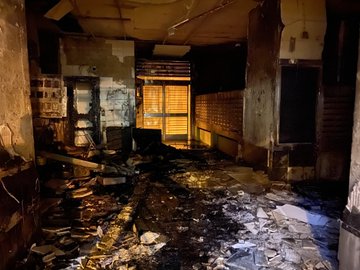![]() China: Coronavirus – an exercise in intensified social control
China: Coronavirus – an exercise in intensified social control
24/1/20:
“As of today, the state has essentially quarantined an area estimated to encompass 35 million people—a population greater than the 10 largest U.S. cities combined. The unprecedented intervention paints an apocalyptic scene. Around the world, stock markets fell. …Based on what’s known so far, the virus is dangerous—but not unprecedentedly so. It has been confirmed to spread among people who are in close contact—family and health-care workers—but it does not clearly show sustained transmission among people, like other coronaviruses that can manifest as the common cold. The virus seems to have an especially high mortality rate, though of the 26 people reported dead so far, most have been of advanced age or chronically ill—a similar demographic to the hundreds of thousands of people killed every year by the influenza virus….so far, the most deadly coronaviruses—SARS and MERS—each killed fewer than a thousand. Both were tragic, but could have been exponentially worse. Part of the fear and panic in the current case seems less due to the virus than to the response. The moderately virulent nature of the pathogen seems at odds with the fact that the largest quarantine in human history is now taking place in an authoritarian state. People inside and outside of China have limited trust in the information they receive, given the country’s long history of propaganda and censorship. Without knowing everything that the state does, international officials have been hesitant to criticize its response. But there is good reason to believe that the quarantine itself will have significant consequences. Quarantines were common during Europe’s plague-addled Middle Ages, and continued to be the primary means of controlling outbreaks until 1900. Especially after the advent of antibiotics and diagnostic testing, the relative harms began to outweigh the benefits. International agreements were put in place to limit the practice as a matter of justice, because of the burden it placed on people and economies, in addition to basic questions of effectiveness. Quarantines may be used in isolated cases, especially before an outbreak is widespread. But in China, given the advanced spread of the outbreak—the new virus was first reported to the World Health Organization just three weeks ago and has since been found in Japan, South Korea, the United States, Thailand, Singapore, and Vietnam—some experts believe any window for effective containment has passed…Shortly after the quarantine was announced, The Washington Post reported increases in the cost of food in Wuhan. Some citizens have reported empty grocery shelves…. Social-media posts describe people being unable to get access to medical facilities for viral testing. Other posts on social media about the scope of the outbreak have inexplicably disappeared, prompting accusations of censorship and further uncertainty.”
In 2005 in France the avian flu “pandemic” was the first item of the evening news for about 6 weeks. Small farms were visited daily by gendarmes until they were forced to close down. Nobody in France died, and globally there were less than 1000 deaths of human beings, vastly smaller than deaths from ordinary flu annually (over 60,000 p.a.). But it served the purpose of destroying small farmers/peasants and greatly boosting agribusiness. In 2009 swine flu became the pretext for an exercise in social control – with doctors forced by the state to vaccinate everybody who came to their clinics fearing the disease. Despite massive and continual state and media propaganda, less than 30% of the population took up this manipulated ‘need’ for a vaccine. The Minister of Health at the time, Rosalyne Bachelot, whose personal interests in the pharmaceutical industry were well-known, ordered billions of euros worth of vaccines that were never used, but which the state paid to her financial connections. Undoubtedly illness and disease are constantly used for ulterior motives which will invariably be dismissed as ‘conspiracy theory’ by interested parties. We should remember that Wuhan – the centre of the Coronovirus – had a significant social movement in July 2019 which tentatively began to connect to the movement in Hong Kong ( see this, this, this, this, this, this, and this), which may be a factor in this exercise in authoritarian repression. And Hong Kong too is experiencing some minor elements of control as a result of this virus. In the face of the very tenuous beginnings of significant social contestation in countries throughout the world, fear of touching or proximity to others is another convenient factor in the intensification of social separation. Given the ‘spontaneous’ racism of many people, it doesn’t need to be deliberate policy for it to be exploited in such a way as to exacerbate already existing separations – such as racism towards anyone who looks Chinese (see, for instance, this).
But
in Hong Kong some people are resisting.
“Protesters threw petrol bombs on Sunday night at an empty public housing complex in Hong Kong that had been earmarked to become a temporary quarantine zoneas the city battles an outbreak of the SARS-like Novel Coronavirus as the city battles an outbreak of the SARS-like Novel Coronavirus…Dozens of local residents and protesters opposed to the idea held rallies outside the complex on Sunday, with some setting up road blocks…The city’s ability to combat the crisis was hampered by moves in mainland China to cover up and play down the outbreak, leaving a lasting legacy of distrust among many Hong Kongers.”



